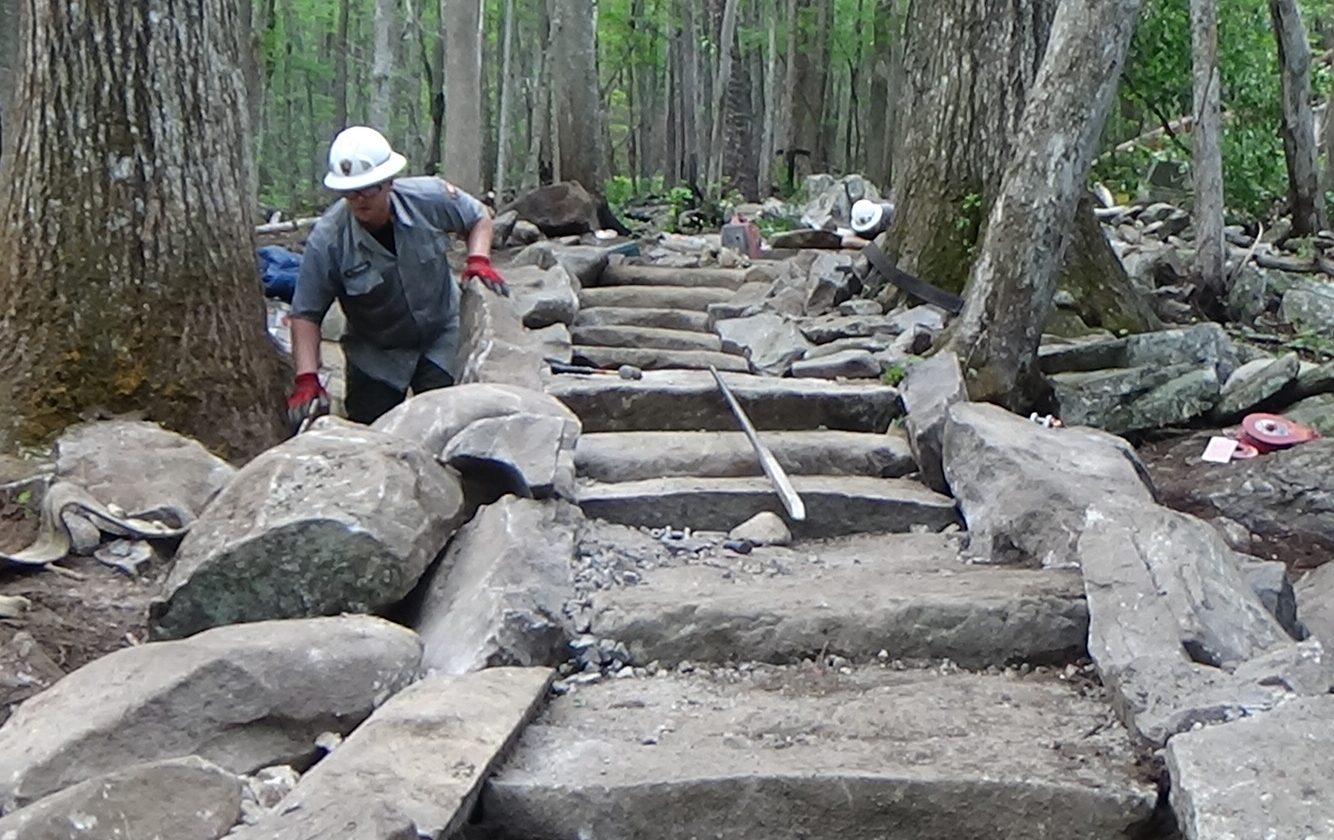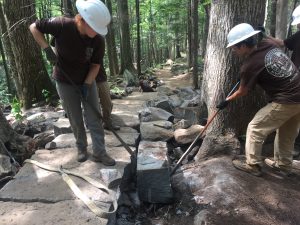by Julie Dodd
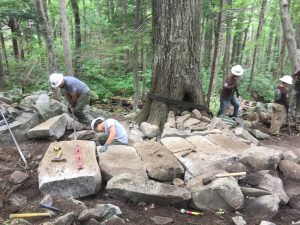
The Trails Forever crew is hard at work restoring the Rainbow Falls Trail, one of the popular trails in the Great Smoky Mountains National Park. Department of Interior Secretary Ryan Zinke even stopped by last week to lend a helping hand. The trail leads to Rainbow Falls and to Mt. Le Conte.
Rainbow Falls is 2.7 miles from the trailhead on Cherokee Orchard Loop Road. Mt. Le Conte is 4.2 miles further.
This is the fourth trail that the Trails Forever crew has restored as part of the Friends of the Smokies initiative to restore popular trails in GSMNP. Previous restoration projects were Forney Ridge, Chimney Tops and Alum Cave trails.
Josh Shapiro is the Trails Forever crew supervisor. I asked him about progress on the Rainbow Falls restoration.
FOTS: You’ve worked on with the Trails Forever crew on all four trail restorations. How would you compare some of the challenges of the different trail restoration work?
Shapiro: The biggest challenge of rehabilitating Rainbow Falls Trail is trying to cover up all of the social trails and creating one, defined trail, to limit visitor impact. (Social trails are unofficial trails that are created by hikers to create a shorter route.)
Not only is the terrain of the Rainbow Falls Trail much more flat — allowing hikers to wander off of the trail — but there are a lot of switchbacks. Switchbacks in particular have suffered a lot of damage from hikers using them as shortcuts. Those shorcuts can lead to erosion in the area. The crew is hard at work trying to fix the trail itself and finding ways to block off social trails and switchback shortcuts.
FOTS: What are some of the logistics involved in restoring the Rainbow Falls Trail, such as replacing bridges, creating steps, getting materials to where they are needed on the trail, etc.
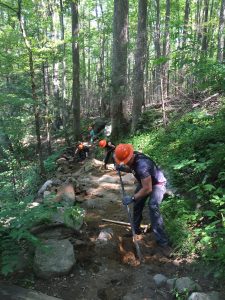
Shapiro: The work on Rainbow Falls Trail is very similar to the other large-scale restoration projects. We’re removing rocks and roots from the trail surface, building rock and locust staircases, cutting back vegetation to open the trail corridor, and covering up social trails.
We build large swale drains (shallow drains with sloping sides) and grade reversals, which means making the trail have climbing and descending sections that shortens the water flow on the trail to prevent erosion. Our goal is to have a safer and more sustainable trail.
FOTS: What is the timeline for the restoration?
Shapiro: We have two seasons (during 2017 and 2018) to complete the restoration work. We are starting the work at the trailhead and working our way up to the falls.
FOTS: How many are working on the crew?
Shaprio: This season the National Park Service crew consists of nine crew members, and 12 ACE (American Conservation Experience) Conservation Corps crew members are working with us.
Volunteer with Trails Forever crew

Volunteers play an important part of the trail restoration, working with the Trails Forever crew. Adam Monroe is the coordinator of the trail volunteers. Volunteers work each Wednesday, June through September. You must register in advance to volunteer.
You can learn more about volunteering at the FOTS website. You can contact Adam Monroe — adam_monroe@nps.gov or call 828-497-1949.
I volunteered for both the Chimney Tops Trail and Alum Cave Trail restorations and really enjoyed the experience. As a volunteer, I received specific directions about my work and went through a safety presentation before getting my hard hat, safety glasses and ear plugs.
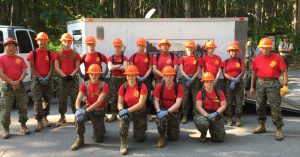
Volunteering on the trail restoration provided me with the opportunity to see what was involved in the skilled work of sawing rocks to become steps and installing and securing each step. As a volunteer, I also learned about strategies used to create a safe hiking experience.
